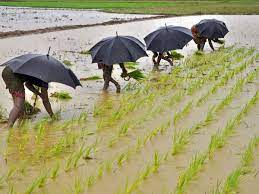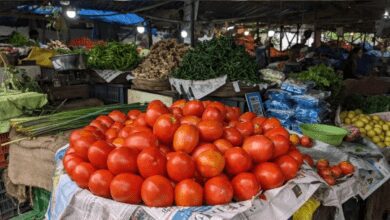Indian Monsoon: Pulses Sowing Is Still Slow Despite Concerns About Excessive Rainfall in Some Areas of the Country
Data from a recent research by market analytics company Crisil revealed that the seeding of pulses is well behind where it was a year ago. In comparison to the same time in 2022, the area seeded under pulses up to July 28 was down 11.3%.
While pulses still have difficulties, other kharif crops have shown year-over-year increase. Data from Crisil show that the area seeded with oil seeds has grown by 2%, the area sown with coarse cereals has increased by 1.6%, and the area sown with rice has climbed by around 2%. In all, the area planted with kharif crops has decreased by 0.3% from the same time previous year.
Due to the beginning of this year’s El Nino influence, statistics for kharif crops are being attentively studied throughout the current monsoon. The phenomena has in the past caused a shortage of rainfall in the nation. According to the India Meteorological Department (IMD), the nation would get normal rainfall at 96% of the long period average (LPA). Rainfall between 96 and 104% of LPA is seen as typical. While the nation’s met department had forecast a typical monsoon, Skymet had said in its analysis that India might record 94% of LPA, which would cause a shortfall in precipitation.
So Far, the Indian Monsoon
According to the economists at Crisil, the southwest monsoon began later than expected and continued to be deficient in June. It did, however, make up ground in July and is now back to normal.
Eight of the nine states that were listed in the study as being reliant on rain experienced normal or above-average rainfall as of August 1 according to the statistics quoted. The states that rely heavily on rainfall are those where irrigation is below average. Jharkhand, Assam, Chhattisgarh, Odisha, Karnataka, Maharashtra, Uttarakhand, Himachal Pradesh, and Rajasthan among those, according to the study.
Among these states, Jharkhand has the lowest rainfall totals, whilst Rajasthan has the most surplus rainfall and biggest departure from LPA. Bihar, Kerala, and West Bengal are among the states with above-average irrigation that have had rainfall deficits.
In their analysis, the economists made the following observation concerning this year’s monsoon pattern: “Monsoon’s volatility has been higher this year compared with the normal and the past five years.”
Concerns regarding surplus rainfall in northwest India have also been highlighted in addition to deficiency rainfall. According to the survey, key crop-producing regions including Gujarat, Punjab, and Rajasthan had prolonged periods of heavy rain in July. Farmers seemed to have postponed planting to drain surplus water since excessive rains started to fall as farmers were beginning to seed, according to economists.
Atmospheric Pressure
Although majority of the kharif crops are already being sown, the research has raised questions about pulses’ susceptibility because of the sowing data’s lag. Pulses saw inflation of 10.5% in June. The consumer price index (CPI) inflation increased in June, which contributed to the previous month’s high inflation for rice and coarse cereals. It was calculated to be 4.8%. Inflation is anticipated to increase much more in July.
In its research, Crisil stated that factors other than the monsoon have been influencing food inflation more and more recently. Despite a typical monsoon, it was reported that food inflation was high in three of the preceding four years. According to the research, “[the factors] include extreme weather events, domestic policy, and geopolitical developments.”
El Nino and erratic rainfall, according to the study, continue to be major threats to food inflation this fiscal year. The RBI’s monetary policy committee (MPC) meeting, which will take place from August 8 to 10, is the focus of everyone’s attention right now. In spite of ongoing pressure on CPI inflation, experts anticipate the central bank to maintain its repo rate freeze policy, according to news agency PTI.







